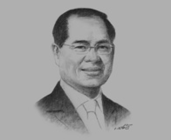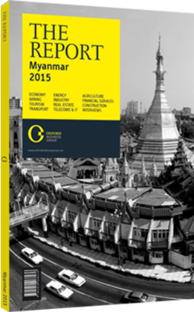Lim Hng Kiang, Minister for Trade and Industry of Singapore: Interview

Interview: Lim Hng Kiang
How would you assess Myanmar’s economic and political reforms thus far?
LIM HNG KIANG: We have seen progress made by the Myanmar government to boost investment and economic activities. President Thein Sein signed into effect a new Foreign Investment Law (FIL) in November 2012 to replace the previous FIL, which was enacted in 1988. The FIL, which allows overseas firms to fully own ventures and offers tax breaks and longer land leases, was subsequently enhanced to further welcome foreign investment. In July 2013, the new Central Bank Law was passed and it provided the Central Bank of Myanmar with autonomy to supervise the banking sector.
In 2014, Myanmar is expected to take a further leap ahead with the issuance of foreign bank licences and the launch of Myantrade to drive exports. These are encouraging moves. Economic evolution is a process that takes time and each country faces a unique set of challenges that must be addressed at every stage before further progress can be made.
Will the ASEAN Economic Community (AEC) promote trade between Singapore and Myanmar?
KIANG: Key initiatives under the AEC, which contribute to promoting trade among ASEAN Member States (AMS), are already being implemented. For instance, the ASEAN Trade in Goods Agreement (ATIGA), which has been in force since 2010, has helped to bring tariffs down to zero for virtually all goods traded in ASEAN. It also contains more liberal rules of origin for products to qualify for tariff concessions. This allows companies in the region to trade with each other at more competitive rates. In the area of services, ASEAN has completed eight packages of liberalisation commitments that reduce the barriers for service providers from AMS.
In terms of investment, the ASEAN Comprehensive Investment Agreement entered into force in 2012 and contains commitments on liberalisation, protection, facilitation and promotion that provide a more stable and predictable environment for investors in the region.
Continued efforts to further liberalise trade and investment in the region – such as by tackling non-tariff barriers, implementing additional packages of services commitments targeted for completion by 2015, and working to reduce impediments to investment – can be expected to contribute to further growth in trade and investment between Singapore and Myanmar and the wider ASEAN region.
How can partnerships between Singaporean and Myanmar firms be encouraged on a greater scale?
KIANG: On the economic front, bilateral trade has increased steadily over the years. In 2013, Myanmar climbed 11 positions to become Singapore’s 37th-largest trading partner, with bilateral trade increasing 71.2% year-on-year (y-o-y) to reach S$3bn ($2.38bn). As at end 2012, Singapore’s stock of foreign direct investment (FDI) into Myanmar decreased 13.7% y-o-y to reach S$3.8bn ($3.02bn), while FDI stock in Singapore from Myanmar increased 17% y-o-y to reach S$22.7m ($18.04m). Myanmar’s strategic location at the crossroads of India, China and South-east Asia, abundant land and natural resources, as well as its young, hardworking population are factors contributing to its economic potential.
Over the past few years, our companies have made significant inroads into Myanmar, with projects across various sectors. Some of these projects will transform Myanmar’s landscape. For example, Pan Pacific Hotel Group opened the first international hotel in Nay Pyi Taw in April 2014, while a Singapore consortium led by CPG is developing a master plan for the Kyauk Phyu Special Economic Zone in Rakhine State.
Partnerships between Singapore and Myanmar companies will thrive in a stable and investment-friendly environment. Singapore firms value long-term, sustainable partnerships that are mutually beneficial. We recognise that the Myanmar government’s key concerns include the creation of jobs, higher standards of living and long-term economic growth. Our companies can play a constructive role in achieving these objectives.
You have reached the limit of premium articles you can view for free.
Choose from the options below to purchase print or digital editions of our Reports. You can also purchase a website subscription giving you unlimited access to all of our Reports online for 12 months.
If you have already purchased this Report or have a website subscription, please login to continue.

